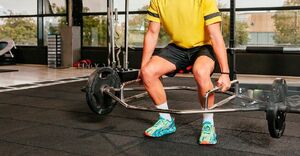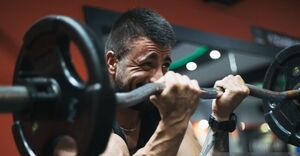
Inspecting Your Equipment: Tips for Chest Fly Machine Maintenance
Maintaining your chest fly machine is crucial for ensuring safety, efficiency, and cost savings. Regular inspections can help identify wear and tear, loose or broken parts, and the need for proper lubrication. Cleaning and sanitizing the machine is essential for removing sweat and bacteria buildup. Understanding common maintenance issues, such as cables, pulleys, seat, padding, and weight stacks, can help you address problems promptly. By following these tips and techniques for fixing and replacing parts, you can prolong the lifespan of your chest fly machine. Let’s dive into the details to keep your equipment in top condition.
Why is Maintenance Important?
Regular maintenance of gym equipment is crucial for ensuring the safety and efficiency of workouts in fitness centers. Proper maintenance not only enhances equipment longevity but also promotes user safety and overall workout experience.
By performing routine maintenance, fitness facilities can prevent unexpected breakdowns and ensure that machines operate smoothly, creating a hassle-free exercise environment. A well-maintained gym not only prevents accidents but also instills a sense of cleanliness and order, motivating visitors to stay committed to their fitness goals.
Scheduling regular upkeep sessions for treadmills, weights, and cardio equipment contributes to optimal performance, enabling gym-goers to maximize the benefits of their workouts without interruptions.
Safety
Ensuring the safety of gym users is paramount in fitness facilities, and regular equipment maintenance plays a vital role in upholding safety standards.
Proper care and maintenance of gym equipment not only extend their lifespan but also reduce the risk of malfunctions that could lead to accidents. By regularly inspecting and servicing machines, gym managers create a safer environment for individuals engaging in physical activities.
The importance of emphasizing proper form during exercise sessions cannot be overstated. When users are educated on how to use equipment correctly and maintain good posture, the likelihood of injuries decreases significantly. Well-maintained machines not only enhance user safety but also optimize the overall workout experience.
Efficiency
Efficient workout equipment is essential for maximizing the effectiveness of exercise routines, and regular maintenance is key to ensuring optimal performance.
- When gym machines are well-maintained, they not only operate smoothly but also provide accurate resistance levels and settings, which play a crucial role in achieving desired fitness goals.
- Neglecting maintenance can lead to worn-out parts, decreased performance, and even safety hazards.
To optimize equipment efficiency, it’s important to establish a routine maintenance schedule that includes basic tasks such as cleaning, lubricating, and inspecting for any signs of wear and tear. By following these best practices, gym owners and fitness enthusiasts can prolong the lifespan of their machines and enjoy consistently effective workouts.
Cost Saving
Implementing a structured maintenance schedule not only extends the lifespan of gym equipment but also leads to cost savings by reducing the need for frequent repairs and replacements.
- Regular maintenance ensures that machines are operating efficiently, minimizing the risk of breakdowns and unexpected expenses.
- Simple tasks such as cleaning equipment after each use, lubricating moving parts, and conducting routine inspections can significantly enhance equipment longevity.
- Investing in high-quality equipment and following manufacturer guidelines for maintenance can help prevent major issues and costly repairs down the line.
By regularly checking for wear and tear, addressing minor problems promptly, and keeping a detailed maintenance log, fitness centers can optimize their equipment’s performance and minimize overall maintenance costs.
How Often Should You Inspect Your Chest Fly Machine?
Regular inspections of your chest fly machine are essential to ensure its proper functioning and longevity. Knowing how often to inspect this specific gym equipment can help maintain its performance and prevent potential issues.
- Typically, experts recommend inspecting your chest fly machine at least once a month to catch any issues early on.
- During these inspections, it is crucial to check for signs of wear and tear on the cables, pulleys, and seat padding.
- Ensure that all bolts and screws are tight and secure.
Proper maintenance not only prolongs the lifespan of your equipment but also enhances your workout experience by providing a safe and efficient environment for your strength training routines.
What to Look for During Inspections?
During inspections of your chest fly machine, it is crucial to check for various aspects to ensure its safety, efficiency, and longevity. Knowing what to look for during these inspections can help in identifying maintenance needs promptly.
- Inspect the cables and pulleys for any signs of wear or fraying, as these can lead to safety hazards during workouts.
- Test the range of motion on the machine to ensure smooth operation and adjust any settings if needed.
- It’s also important to inspect the frame and padding for any damages or unusual wear that could compromise user comfort and safety.
- Lubricate moving parts regularly to prevent squeaking or sticking, and keep the machine clean from dust and debris to maintain optimal performance.
Wear and Tear
Monitoring wear and tear on your chest fly machine is essential to identify maintenance needs early and prevent potential breakdowns. Regular care and attention to signs of wear can significantly extend the lifespan of the equipment.
This diligence can save you time and money in the long run, ensuring that your chest fly machine remains in optimal working condition. When using the machine, pay attention to any unusual sounds, resistance changes, or instability, as these can indicate underlying issues. It’s recommended to inspect the cables, pulleys, and weight stacks regularly for any fraying, rust, or loose parts. Proper lubrication of moving parts can reduce friction and wear, enhancing the machine’s performance and longevity. Following the manufacturer’s maintenance guidelines and scheduling professional inspections can help prevent major malfunctions.
Loose or Broken Parts
Identifying and addressing loose or broken parts on the chest fly machine is crucial for maintaining its efficiency and ensuring user safety. Prompt repairs and adjustments can prevent further damage and optimize the machine’s performance.
Regular inspection of the chest fly machine is essential to catch any loose or broken parts early. Common areas to check include cables, pulleys, and the seat mechanism. Loose screws or bolts should be tightened promptly to avoid compromising the machine’s stability. In case of broken parts, such as damaged cables or worn-out pulleys, it is recommended to replace them with high-quality components to ensure smooth operation.
Performing routine maintenance tasks like lubricating moving parts and cleaning the machine can also extend its lifespan and reduce the need for extensive repairs.
Proper Lubrication
Ensuring proper lubrication of moving parts on the chest fly machine is essential for smooth operation and preventing premature wear. Regular maintenance services should include lubrication as a standard practice to uphold equipment performance.
This involves applying the appropriate lubricant to key components such as the pulleys, cables, and pivot points to reduce friction and maintain proper function. It is recommended to use a silicone-based lubricant for its longevity and ability to repel dirt and debris.
Check for any signs of wear or damage during lubrication sessions to address any issues promptly. By incorporating these maintenance tips into a routine schedule, you can extend the lifespan of your chest fly machine and ensure consistent performance.
How to Clean and Sanitize Your Chest Fly Machine?
Maintaining cleanliness and hygiene in fitness facilities is crucial, and cleaning and sanitizing the chest fly machine regularly is essential for the well-being of gym users. Knowing how to clean and sanitize this equipment properly can promote a healthy workout environment.
Regular cleaning and sanitization of the chest fly machine involves a few key steps to ensure effective hygiene maintenance. Start by wiping down all surfaces of the machine with a mild detergent or gym equipment cleaner, paying special attention to areas where sweat and dirt tend to accumulate. Use a clean microfiber cloth to scrub away any residue.
For sanitization, a disinfectant spray or wipes specifically designed for gym equipment can be used to kill bacteria and viruses. Remember to clean the machine’s upholstery and padding as well, following the manufacturer’s care instructions to prevent damage.
By regularly sanitizing the chest fly machine, you not only uphold cleanliness standards but also contribute to the overall wellness and satisfaction of gym-goers.
Using Proper Cleaning Products
Selecting the right cleaning products for your chest fly machine is crucial to maintain its performance and ensure user safety. Using proper cleaning solutions and techniques can help in preserving the equipment’s quality and longevity.
Regularly cleaning your chest fly machine with appropriate products not only removes dirt and sweat build-up but also prevents the growth of bacteria that can compromise its safety.
Remember to avoid harsh chemicals that may damage the machine’s materials, opting instead for gentle, non-abrasive cleansers.
Consistent cleaning also improves the smoothness of motion during workouts, ensuring a seamless user experience.
Make it a habit to sanitize touchpoints like handles and adjustment knobs to promote hygiene and prevent the spread of germs among users.
Removing Sweat and Bacteria Buildup
Regularly removing sweat and bacteria buildup from the chest fly machine is essential to maintain hygiene and prevent equipment deterioration. Proper care and cleaning practices can contribute to the longevity and performance of the workout equipment.
To effectively eliminate sweat and bacteria from the chest fly machine, it is recommended to wipe down the equipment after each use with a disinfectant wipe or a mixture of water and vinegar. Pay special attention to the areas where sweat tends to accumulate, such as handles and seat.
Incorporating a regular cleaning schedule for the machine, including deep cleaning at least once a week, can help prevent mold and mildew growth. Ensuring that all parts of the equipment are properly lubricated and tightened also plays a crucial role in maintaining its functionality and extending its lifespan.
What Are Some Common Maintenance Issues with Chest Fly Machines?
Chest fly machines may encounter various maintenance issues that can affect their performance and efficiency. Recognizing common problems and addressing them promptly is essential for ensuring the smooth operation of these workout machines.
- One common maintenance issue that chest fly machines face is cable wear and tear, which can lead to inconsistent resistance during workouts and compromise the machine’s overall effectiveness.
- Another frequent problem is loose or misaligned pulleys, causing uneven tension distribution and hindering proper movement.
Regular equipment inspection plays a vital role in detecting these issues early on, allowing for timely repairs and adjustments to maintain optimal performance. By closely monitoring key components such as cables, pulleys, and weight stacks, gym owners and users can prevent major malfunctions and prolong the lifespan of their chest fly machines.
Cables and Pulleys
Issues with cables and pulleys on chest fly machines can significantly impact their efficiency and user experience. Regular maintenance and repairs of these components are essential to uphold equipment performance and ensure smooth workouts.
Neglecting the upkeep of cables and pulleys can lead to wear and tear, causing issues such as fraying, snapping, or reduced tension. To prevent such problems, it’s recommended to inspect these components routinely for any signs of damage or degradation. Cleaning the cables and lubricating the pulleys can help maintain their functionality. If any issues are identified, it’s crucial to address them promptly by tightening loose connections, replacing worn-out parts, or seeking professional assistance for more complex repairs.
Seat and Padding
Regular maintenance of the seat and padding on chest fly machines is crucial for user comfort and equipment longevity. Proper adjustments and care practices can help in preserving these components and extending the machine’s lifespan.
To ensure user comfort during chest fly workouts, it is essential to regularly check the seat and padding for any signs of wear or damage. Making necessary adjustments, such as tightening loose bolts or aligning the seat properly, not only enhances the exercise experience but also contributes to the durability of the equipment. Wiping down the seat and padding with a mild detergent or disinfectant after each use helps maintain cleanliness and prevent deterioration. By incorporating these simple maintenance steps into your routine, you can prolong the lifespan of your chest fly machine and enjoy a safe and effective workout every time.
Weight Stacks
Proper maintenance of weight stacks in chest fly machines is essential for maintaining equipment efficiency and user safety during weight training sessions. Following an inspection checklist and maintenance tips can help in ensuring the functionality and longevity of these crucial components.
Regularly checking the condition of weight plates, cables, and pulleys is vital to prevent accidents and ensure smooth operation. Inspecting for signs of wear, rust, or misalignment is key to addressing issues promptly. Lubricating moving parts, adjusting tension settings, and replacing worn components are recommended maintenance practices. By adhering to these guidelines, gym owners and users can maximize the performance of chest fly machines and create a safe workout environment.
How to Fix and Replace Parts?
Knowing how to effectively fix and replace parts on your chest fly machine is crucial for ensuring its continuous operation and longevity. Proper maintenance services and repair practices can help in addressing issues promptly and preserving the equipment’s quality.
Regularly inspecting your chest fly machine for signs of wear and tear is essential in order to identify any faulty components that may require replacement. When it comes to parts replacement, it is important to use high-quality components to ensure optimal performance and safety.
Following manufacturer guidelines for maintenance procedures and scheduling routine checks can prevent more extensive and costly repairs down the line. By staying proactive with maintenance and addressing issues promptly, you can extend the lifespan of your equipment and maintain a safe workout environment.
Tips for Prolonging the Lifespan of Your Chest Fly Machine
Implementing specific tips and practices can significantly contribute to prolonging the lifespan of your chest fly machine, enhancing its efficiency and performance for an extended period. Taking proactive steps towards equipment upkeep can ensure its longevity and optimal functionality.
Regularly inspecting the chest fly machine for wear and tear, such as checking cables and pulleys for damage, can prevent minor issues from escalating. Keeping the machine clean and dust-free not only improves its appearance but also reduces the risk of malfunctions. Lubricating moving parts, like hinges and levers, helps maintain smooth operation and prevents premature deterioration. Following the manufacturer’s maintenance guidelines and scheduling routine servicing can address any potential problems before they compromise the machine’s performance.




No Comments